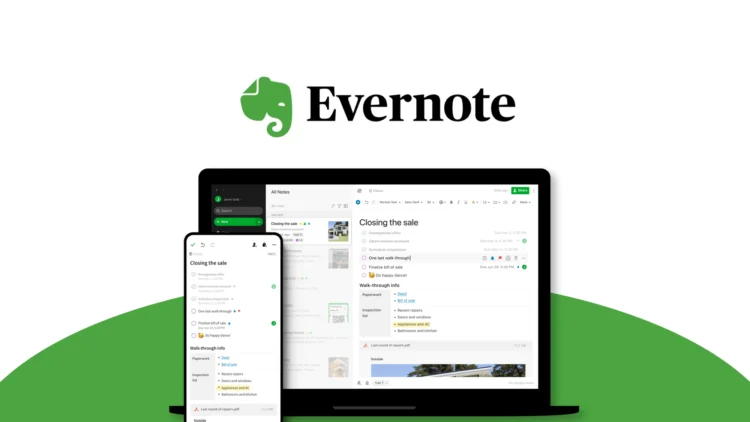Keeping your digital workspace in order is no longer just about “tidying up” — it’s about making sure you can find, share, and secure what you need without wasting time.
In 2025, online file organization tools have evolved into complete ecosystems that integrate storage, collaboration, and automation.
Whether you’re running a business, freelancing, or just keeping your personal files in check, the right tool can save you hours each week and prevent costly mistakes.
Page Contents
1. Google Drive – The All-in-One Cloud Workspace
Google Drive remains a leader for both personal and professional use. It integrates directly with Docs, Sheets, and Slides, making it easy to create and manage files without leaving the platform. Its AI-powered search can now scan file contents and even interpret natural language requests like “find last quarter’s budget spreadsheet.”
Best for: Teams that work heavily within Google’s ecosystem.
Notable feature: Shared drives with granular permission control.
2. Dropbox – File Syncing Made Simple
Dropbox has refined its sync technology to the point where file transfers feel instantaneous. With Dropbox Dash, you can search across your entire digital life, not just files in Dropbox. Its “File Requests” feature also makes it easy for clients or colleagues to send you files without having access to your folders.
Best for: Freelancers and agencies handling large media files.
Notable feature: Smart Sync to view files without taking up hard drive space.

Source: cloudmounter.net
3. OneDrive – Seamless for Microsoft Users
If your workflow is based in Microsoft 365, OneDrive offers unmatched integration. Files open directly in Word, Excel, or PowerPoint online, and co-authoring is effortless. With built-in ransomware detection and file version history, it’s both collaborative and secure.
Best for: Businesses using Microsoft 365 as their main productivity suite.
Notable feature: Personal Vault for storing sensitive documents.
4. MladU – Beyond Traditional File Transfers
When you’re dealing with sensitive data across multiple platforms, having more than just storage is key. This is where a data transfer manager comes into play. MladU goes beyond basic file movement — it streamlines large-scale data migrations, automates repetitive transfer tasks, and ensures compliance with strict data regulations.
For teams moving between cloud services or handling regulated data, MladU offers precision and peace of mind.
Best for: Organizations that need secure, automated, and compliant file transfers.
Notable feature: Built-in workflow automation for recurring transfers.
5. pCloud – Security Without Compromise
pCloud has gained a loyal following for its lifetime storage plans and robust encryption. With pCloud Crypto, files are encrypted on your device before they even hit the cloud, meaning only you hold the keys. You can also set expiration dates on shared links for added control.
Best for: Individuals and small businesses prioritizing file security.
Notable feature: Built-in media player for music and video files.

Source: cloudmounter.net
6. Box – Enterprise-Grade File Management
Box is built for large organizations that need advanced compliance features, workflow automation, and integrations with tools like Salesforce, Slack, and Zoom. It offers customizable metadata fields to make files searchable in ways that standard naming conventions can’t match.
Best for: Enterprises needing advanced security and compliance tools.
Notable feature: AI-powered content classification for compliance and data governance.
7. Trello with Attachments – Visual File Organization
While Trello isn’t a dedicated file storage platform, its card-based system is a great way to organize files by project or task. You can attach files from Google Drive, Dropbox, or your computer directly to cards, giving context to your documents.
Best for: Visual thinkers and project-based work.
Notable feature: Power-Ups to connect storage apps directly into boards.
8. Evernote – Notes and Files in One Place
Evernote remains a strong choice for professionals who want notes, PDFs, and images in one searchable system. Its new AI search can locate handwritten notes or extract text from images, making it ideal for researchers and writers.
Best for: People who mix file storage with detailed note-taking.
Notable feature: Document scanning directly from the mobile app.

Source: appsumo.com
9. Airtable – File Organization Meets Database Power
Airtable blends the flexibility of a spreadsheet with database functionality. Files can be attached to records, tagged, and linked to other datasets. This makes it perfect for managing creative assets, product catalogs, or research data.
Best for: Teams that want highly customizable file organization.
Notable feature: Multiple views (grid, gallery, kanban) for the same dataset.
10. Zoho WorkDrive – Budget-Friendly Team Storage
Zoho WorkDrive offers collaboration, granular permissions, and deep integration with the rest of Zoho’s suite – CRM, Mail, Projects, and more. It’s ideal for small to mid-sized businesses that want professional file organization without the high price tag.
Best for: Cost-conscious teams that still need robust features.
Notable feature: Customizable team folders with role-based access.
Final Thoughts
In 2025, the best online file organization tool is the one that fits seamlessly into your workflow. Whether you prioritize speed, security, or integration, there’s a solution designed for your needs. By investing a little time in setting up the right system now, you’ll save hours later and keep your digital workspace running smoothly.





